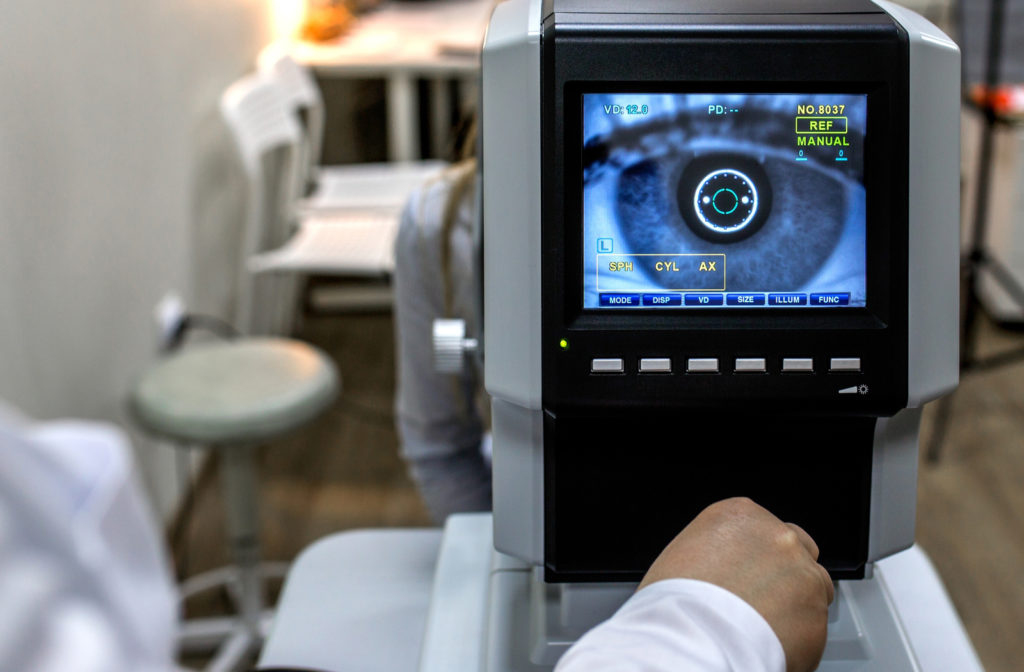
Eye diseases can start slow and develop damage over time. When it comes to eye conditions like cataracts, often times there are not a lot of options for preventing the changes. Effects on your vision can be permanent and sometimes debilitating depending on the intensity and stage of development. Staying informed on the most common eye diseases, and how to manage their effects, can greatly increase your capabilities in managing your eye health. As symptoms develop, your eye care professional will be able to give more to your life by equipping patients with information and optical devices that can enhance vision.
Diabetic Retinopathy
People with Diabetes often suffer from problems with blood vessels which extend throughout the entire body, and the eye is no exception. Retinopathy is a disease which occurs as a result of having diabetes for a long time. In many cases, this condition develops because of poor eye monitoring and treatment. Diabetes patients should have regular eye exams to make sure this condition is not developing, and if it is they are able to handle it early and effectively. Diabetic retinopathy treatment can be done through laser surgery and can make living with the condition manageable.
Macular Degeneration
Age-related macular degeneration is an eye disease beginning at any age, but is attributed to be the leading cause of blindness for people who are older than 65. This degeneration affects the macula, which is the focal part of the retina that assists people with tasks like reading and driving.
There are two sorts of Macular Degeneration: wet and dry. In wet Macular Degeneration, irregular veins behind the retina begin to develop, spilling blood and liquid, causing loss of focal vision, which may happen rapidly. In dry AMD, the light-touchy cells in the macula gradually separate making focal vision reduce after some time. This is the most common form of macular degeneration as it develops slowly and is generally less damaging.
Over time, this condition becomes less and less manageable, but with progressive prescription glasses and the correct optical devices, it can be overcome. Prevention starts with maintaining a healthy diet full of vitamins and supplements that can help protect your eyes for years to come.
Glaucoma
Glaucoma is a degenerative eye disease that comes from too much fluid pressure building in the eye. This condition can damage the eye retina and cause blindness. In 2010, it was estimated about 60 million people around the world have glaucoma. As people age, this disease has a higher chance of infecting. Most people who have glaucoma don’t know it until they start feeling physical symptoms. Glaucoma is a slow process that develops over time, as fluid in your eye becomes slowed, pressure builds causing damage to sensitive tissues.
Prevention of glaucoma is infrequent because of how sporadic the condition may develop. The best way to begin working against glaucoma is by having regular eye exams administered by an eye care professional. When it comes to managing the effects of glaucoma, there are several medicines and processes that can help stop the development process including medicinal eyedrops, laser surgery, and microsurgery. With a combination of these, increasing flow of liquid in the eye is possible.
Strabismus (Crossed Eyes)
Strabismus is the abnormal alignment of the eyes. An eye might be turned either inward, upward, outward or downward. The misalignment might be consistent or irregular. Strabismus can happen in the infant, amid adolescence, or in adulthood. Strabismus in youngsters can bring about the sluggish eye (amblyopia) and cause changeless loss of vision if treatment is deferred. Grown-ups frequently encounter twofold vision (diplopia). Contingent upon the sort and reason for the strabismus, treatment may incorporate the application of surgery, eyeglasses, or eye-fixing treatment.
Cataracts
A cataract is a cloudy lens in the eye that causes foggy vision. It advances gradually as we age; a condition called presbyopia. Aside from old age, cataracts can also be caused by diabetes, injury, drugs, heredity, and exorbitant UV light exposure.
Preventing cataracts is difficult, in fact, by the age of 70, the majority of people will have developed a cataract. Maintaining monthly eye exams with your eye care professional can help you diagnose cataract early and assess them with improved forms of visual correction. Medications for cataracts incorporate eyeglasses, amplifying focal points, or surgery. Contact lenses can help adjust eyesight to reach both close and far distances, and is the least invasive method for adjusting to blurry vision.
Hypermetropia (farsightedness)
Farsightedness is a condition where objects that are close seem blurry, whereas objects in the distance are clear. Often times, one eye may be farsighted and is smaller than the normal one. Thus, light won’t center at the retina, causing blurriness of close objects. Hypermetropia can happen through heredity, diabetes, and tumors around the eye.
Newborn children and youthful youngsters are regularly fairly farsighted; however, this decreases as the eye develops. A few kids can have higher measures of hypermetropia which can cause a consistent foggy picture in one or the two eyes and anticipate ordinary visual advancement (amblyopia). If not caught early, this can bring about lasting visual degradation. Eye exams are the most effective way of catching this disease in its early stages, to prevent further vision loss from happening.


